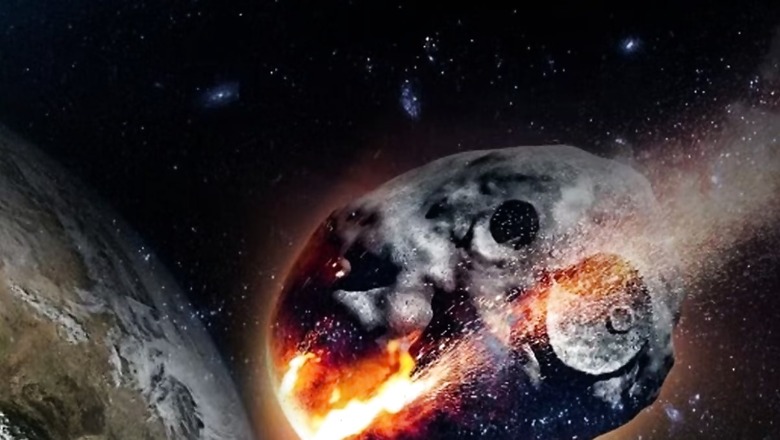
views
Scientists have found that NASA’s Double Asteroid Redirection Test (DART) mission may have changed the shape of its target asteroid. The asteroid, called Dimorphos, is part of a pair of asteroids that orbit each other. After DART hit Dimorphos on September 26, 2023, researchers discovered that it is made up of loose rocks and rubble. The team’s research was published in the journal- Nature Astronomy on Monday, February 26.
DART’s goal was to test if hitting an asteroid could change its path and to protect Earth from potential collisions with space rocks. The mission was a success, showing that the method could be used in the future to redirect dangerous asteroids away from Earth.
Six months after NASA’s DART mission successfully impacted Dimorphos, the smaller asteroid’s orbit around Didymos was observed to have shortened by 33 minutes. Previously, Dimorphos took a certain amount of time to complete one orbit; after the impact, this time decreased, indicating a change in its orbit. Specifically, one complete orbit of Dimorphos around Didymos now takes about 11 hours and 23 minutes.
Moreover, recent research suggests that the impact may have significantly altered Dimorphos’ shape. Using advanced computer modelling, a team, led by University of Bern scientist Sabina Raducan, determined that Dimorphos is a rubble-pile asteroid. This means that instead of being a solid mass, it is composed of loose rocks and debris. Additionally, this finding implies that Dimorphos could have been formed from material that was ejected from Didymos, its larger asteroid companion.
Raducan explained to Space.com that before the DART mission, there was great uncertainty about Dimorphos’ composition and structure. Because Dimorphos is located so far away from Earth, it was challenging to study it in detail. This meant that scientists had a wide range of possibilities in mind, from Dimorphos being a solid, monolithic body to being a loose collection of rocks and debris, known as a rubble pile, or something in between these extremes.
When DART successfully impacted Dimorphos, the outcome was surprising to many. While the possibility of Dimorphos being a rubble pile was considered, actually confirming this through the mission was unexpected. Raducan noted that while the team was prepared for the possibility of Dimorphos being a rubble pile, DART’s impact revealed other unexpected aspects of Dimorphos’ composition and behaviour.
Raducan explained that Dimorphos has a different makeup compared to other asteroids like Ryugu and Bennu. Despite these differences, Dimorphos reacted to impacts in a similar way, which was surprising. When asteroids like Dimorphos, Ryugu and Bennu are hit by something, they don’t have strong gravity or stickiness holding them together, so the impact can create a crater much bigger than the object that hit them.
In the case of the DART mission, instead of just making a crater, the collision actually changed the shape of Dimorphos. This change, known as global deformation, caused material from inside Dimorphos to come to the surface, reshaping its exterior.
The team’s computer simulations showed that a small amount of Dimorphos’ mass, between 0.5% and 1%, was thrown out by the impact, while 8% of its mass was moved around, leading to significant changes in its shape and surface. Raducan added that these findings suggest that how small asteroids respond to impacts is strongly influenced by what they are made of and how their materials are spread out inside them.

















Comments
0 comment